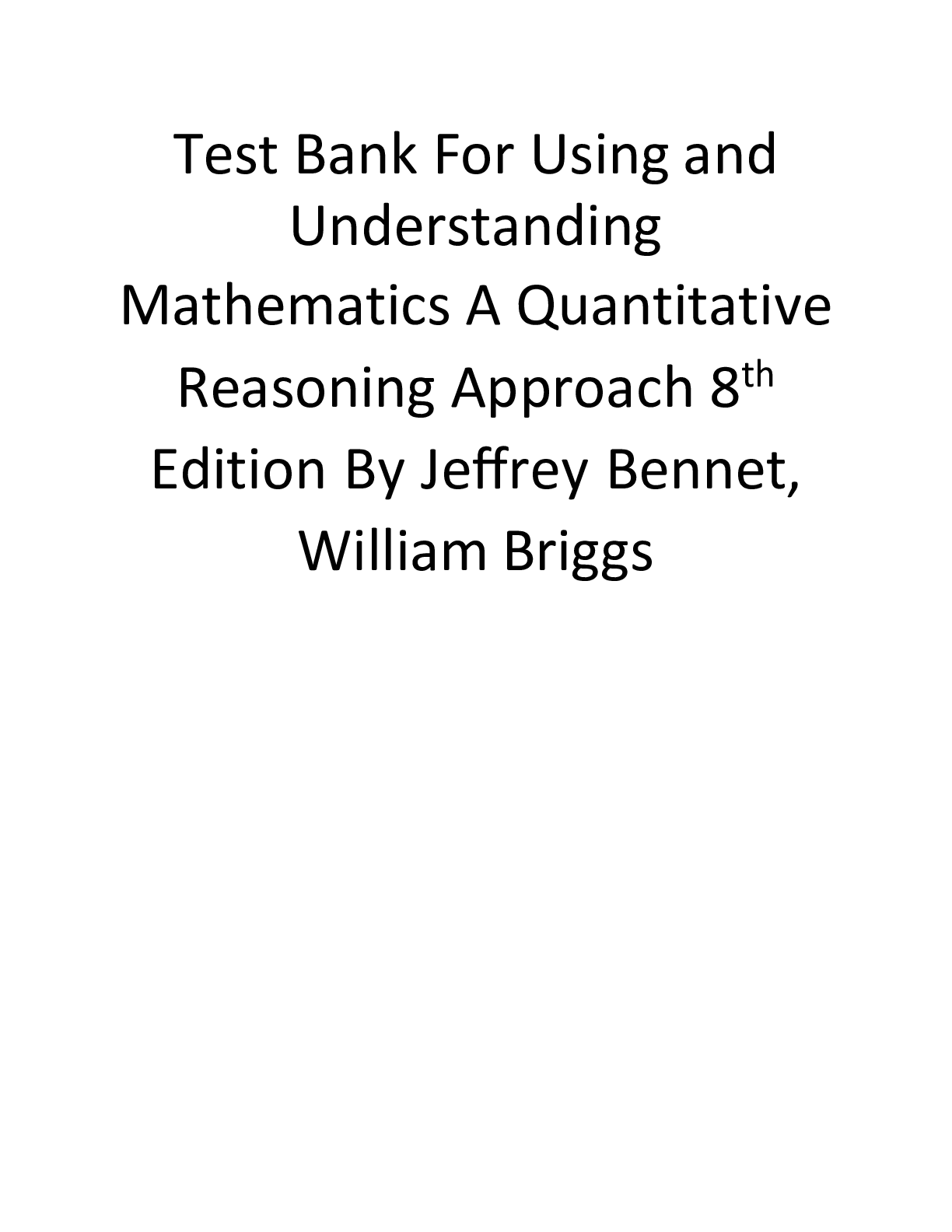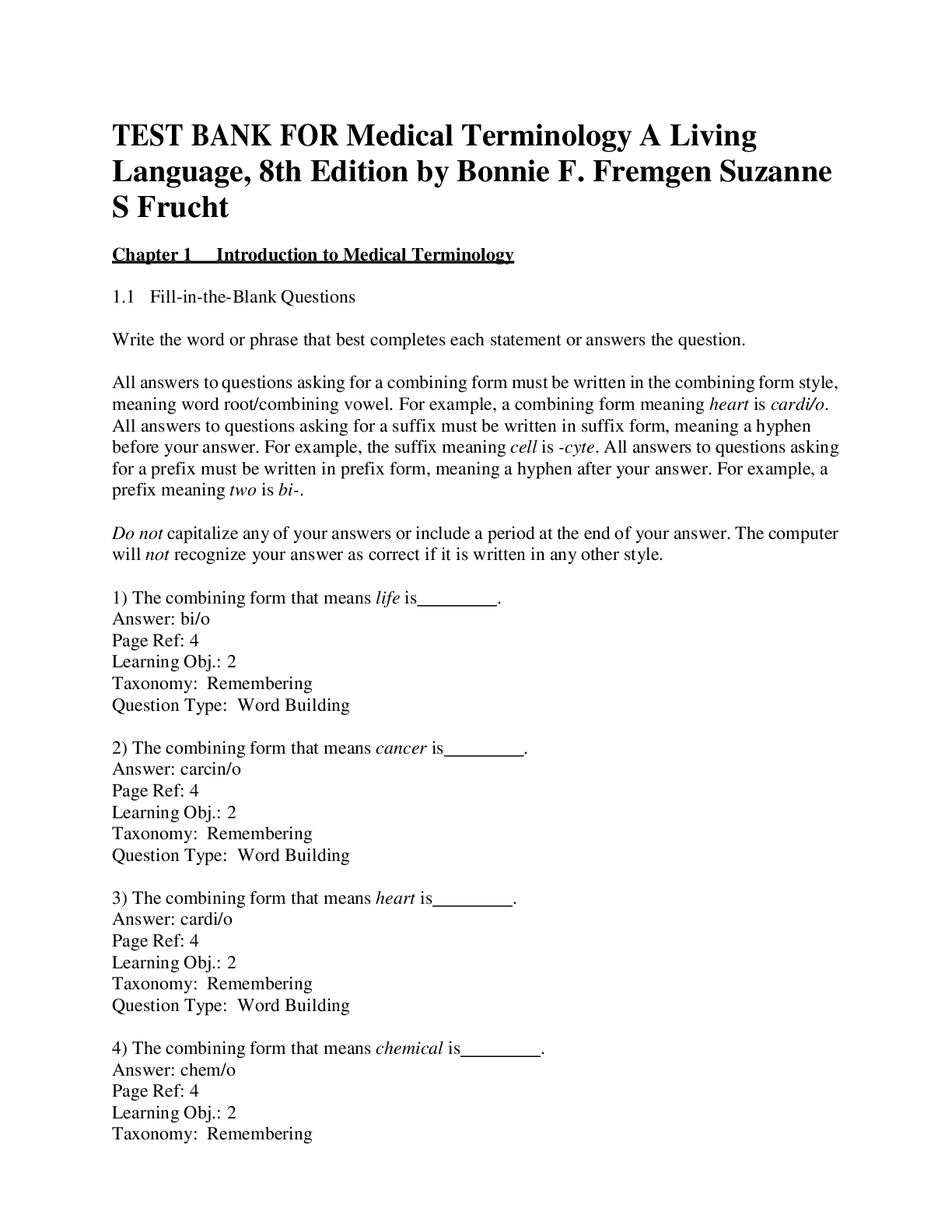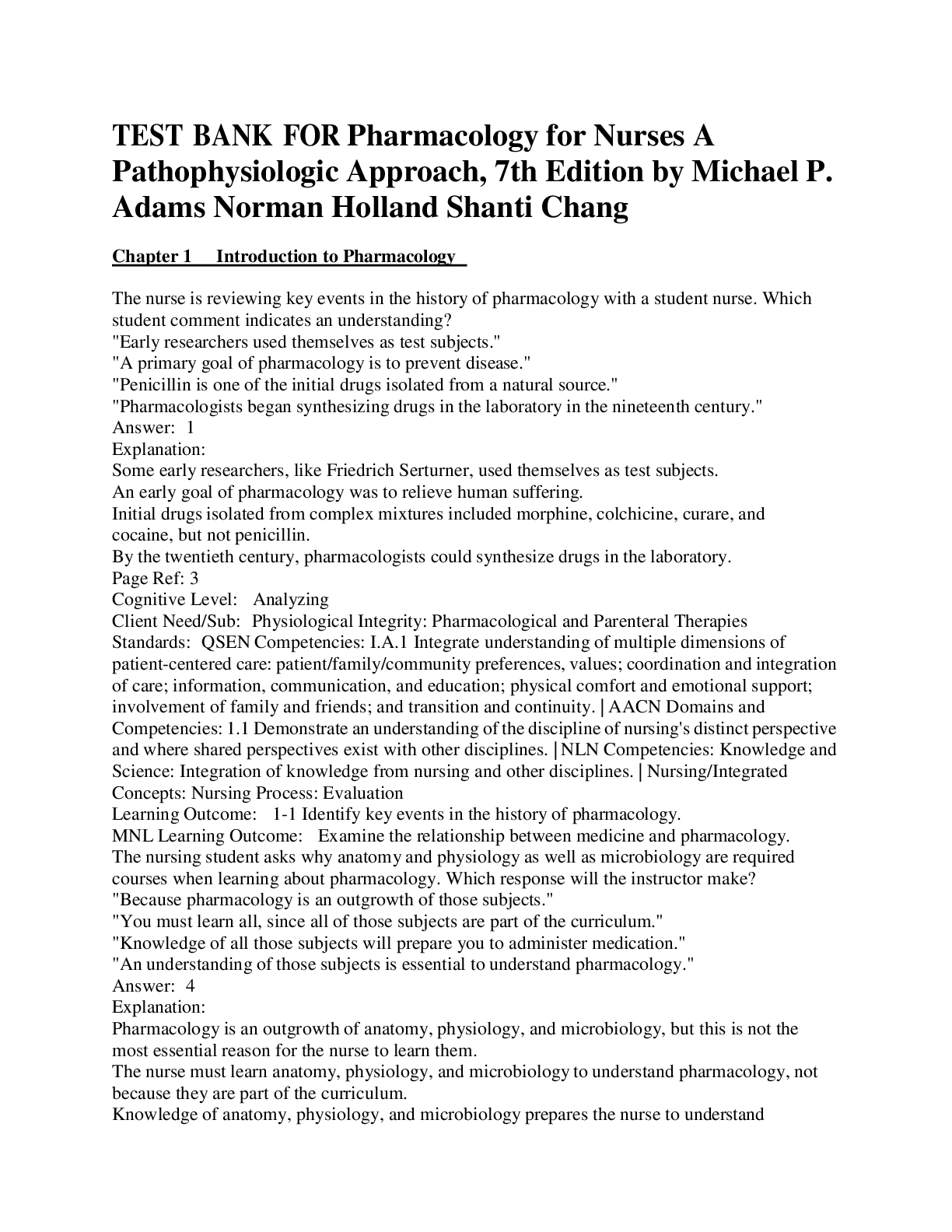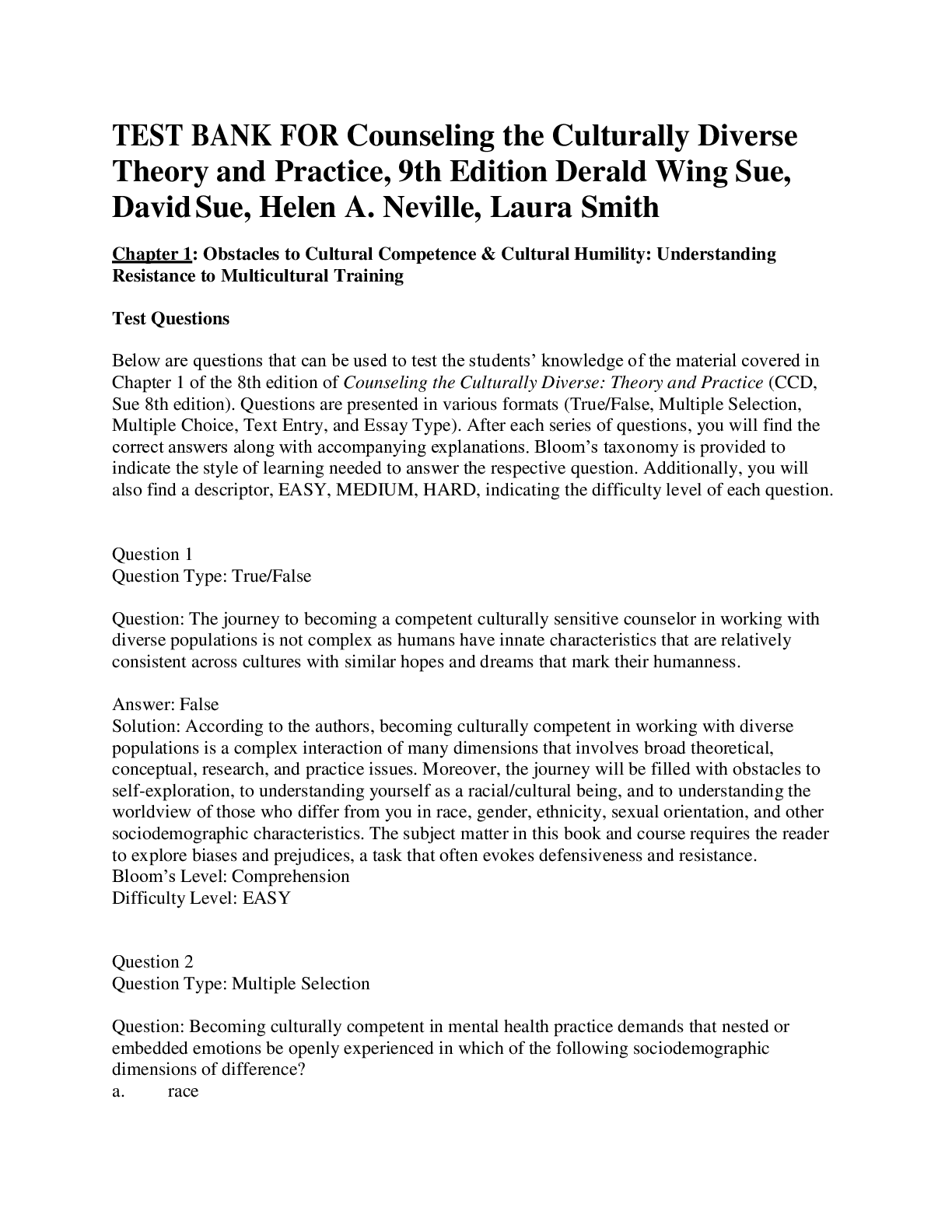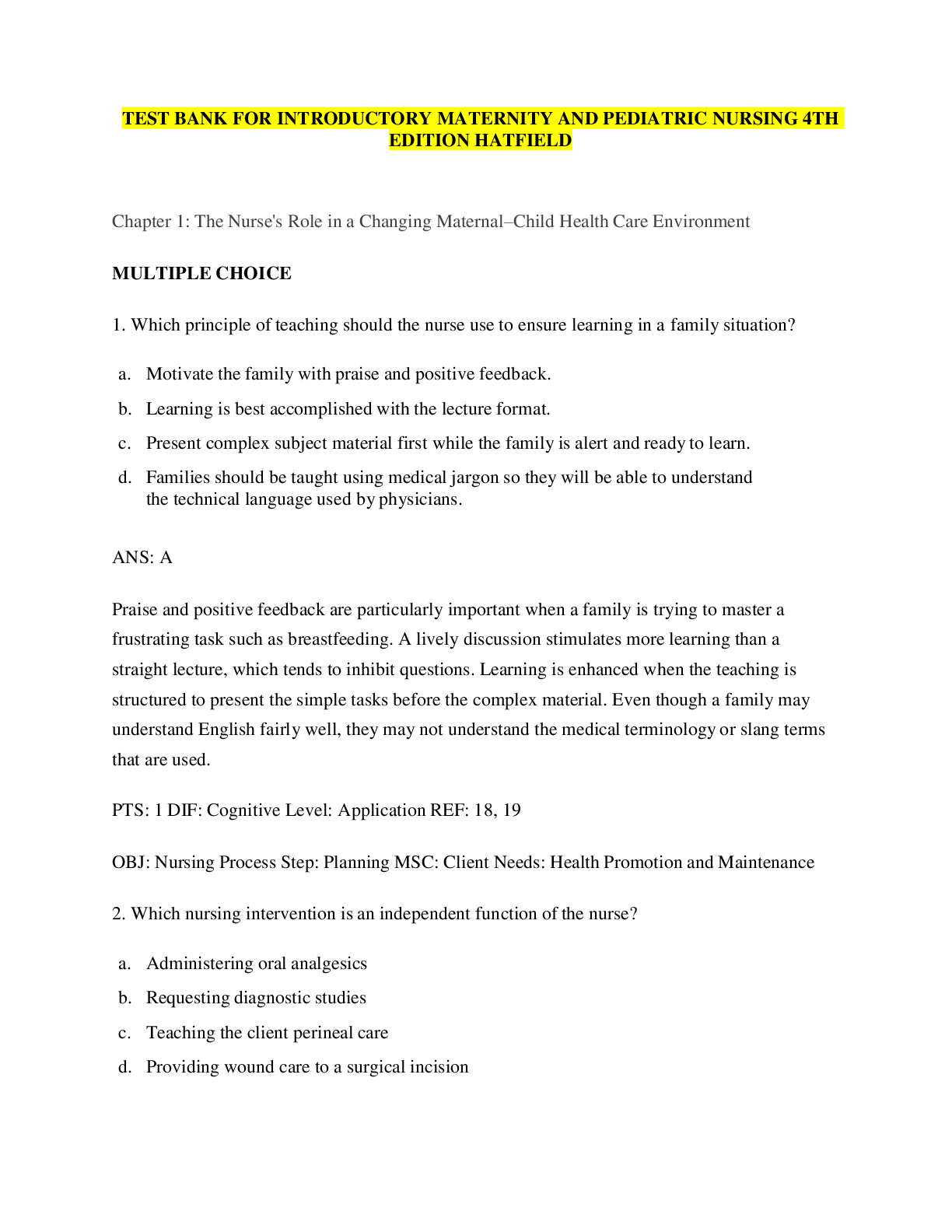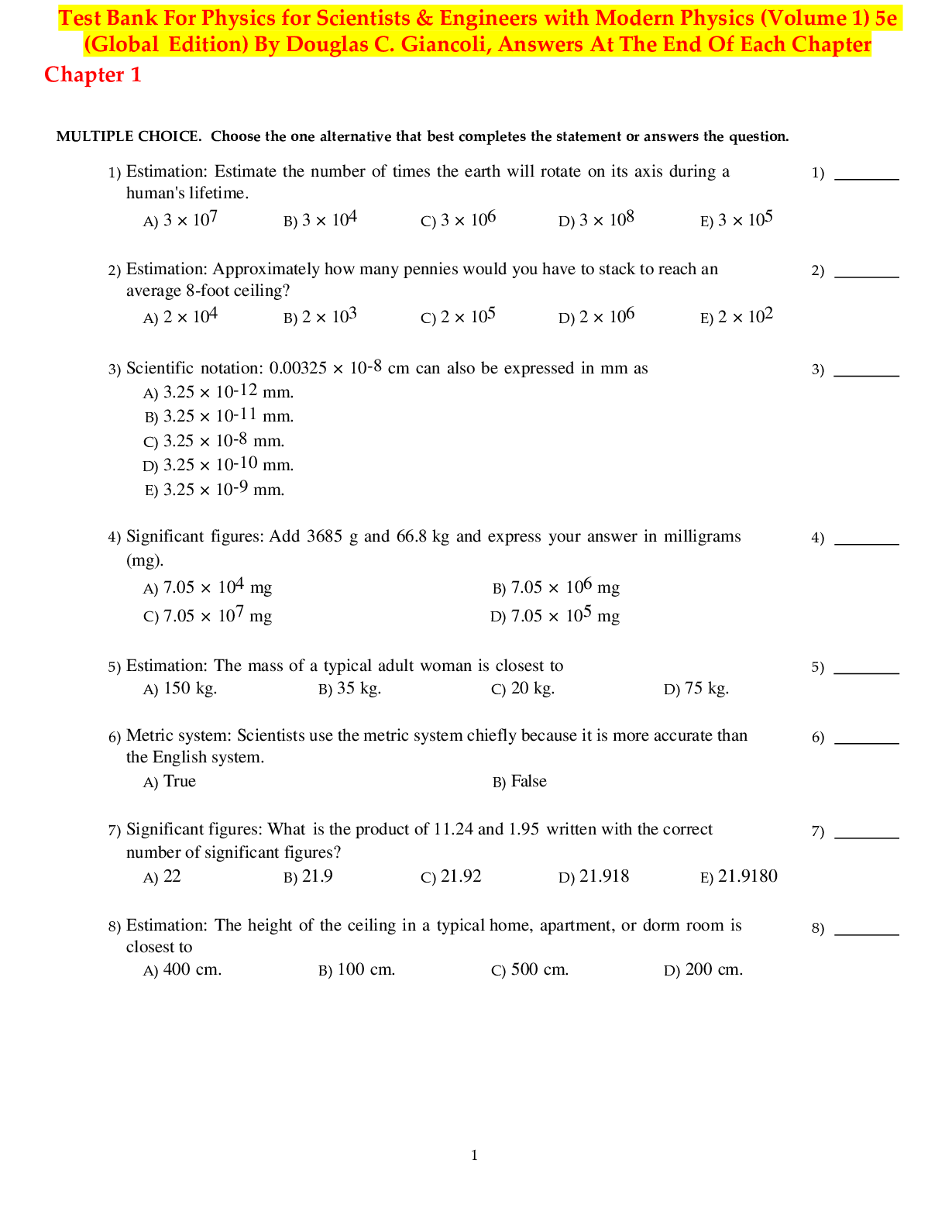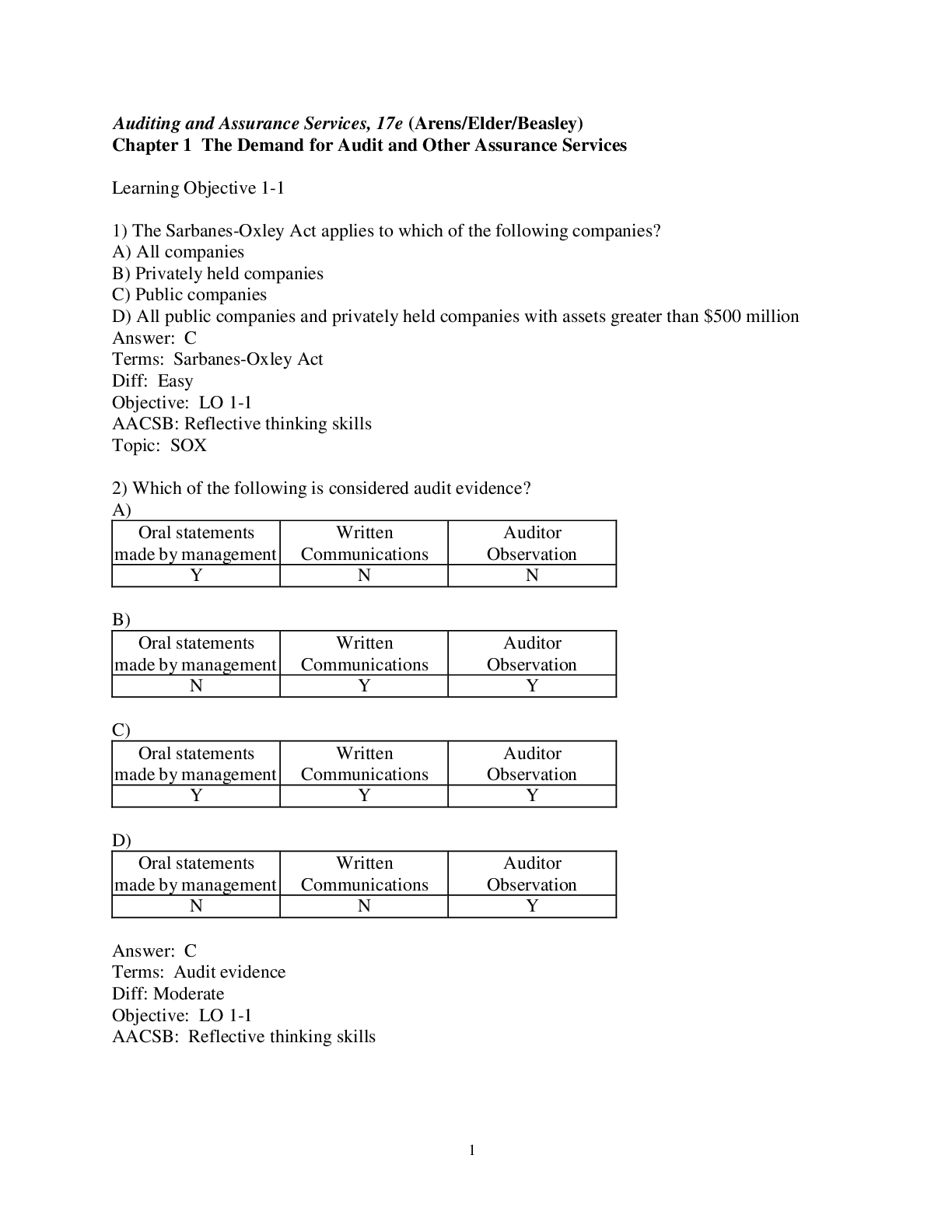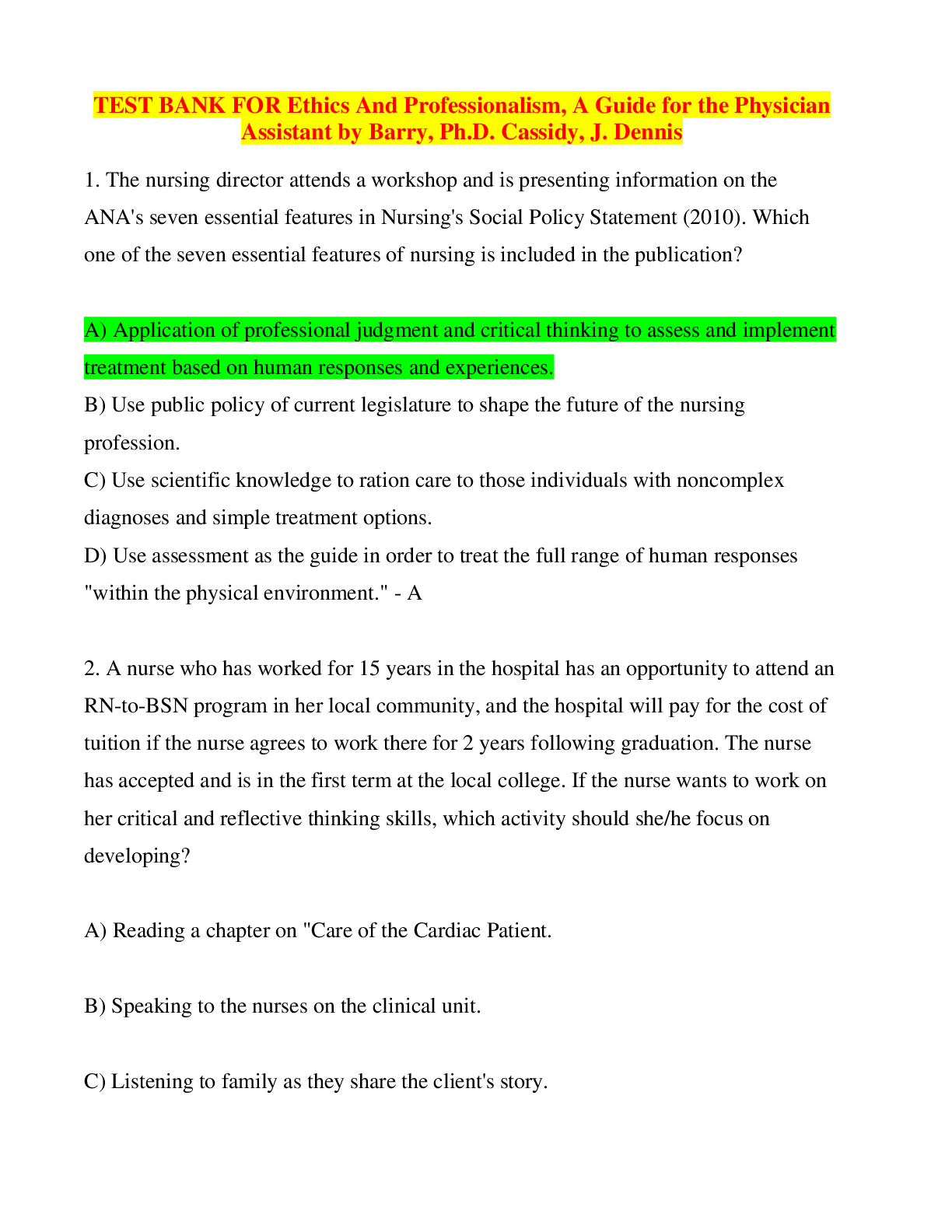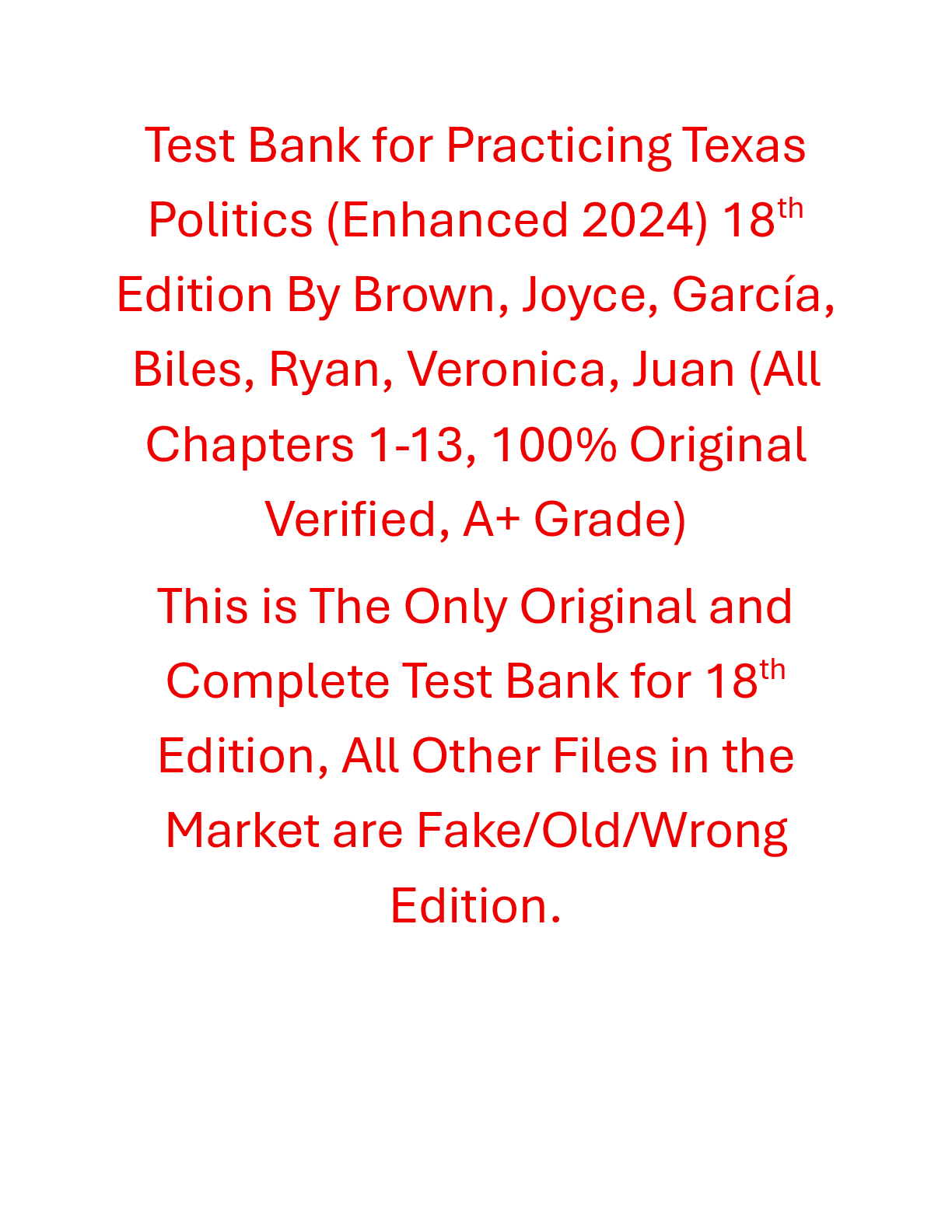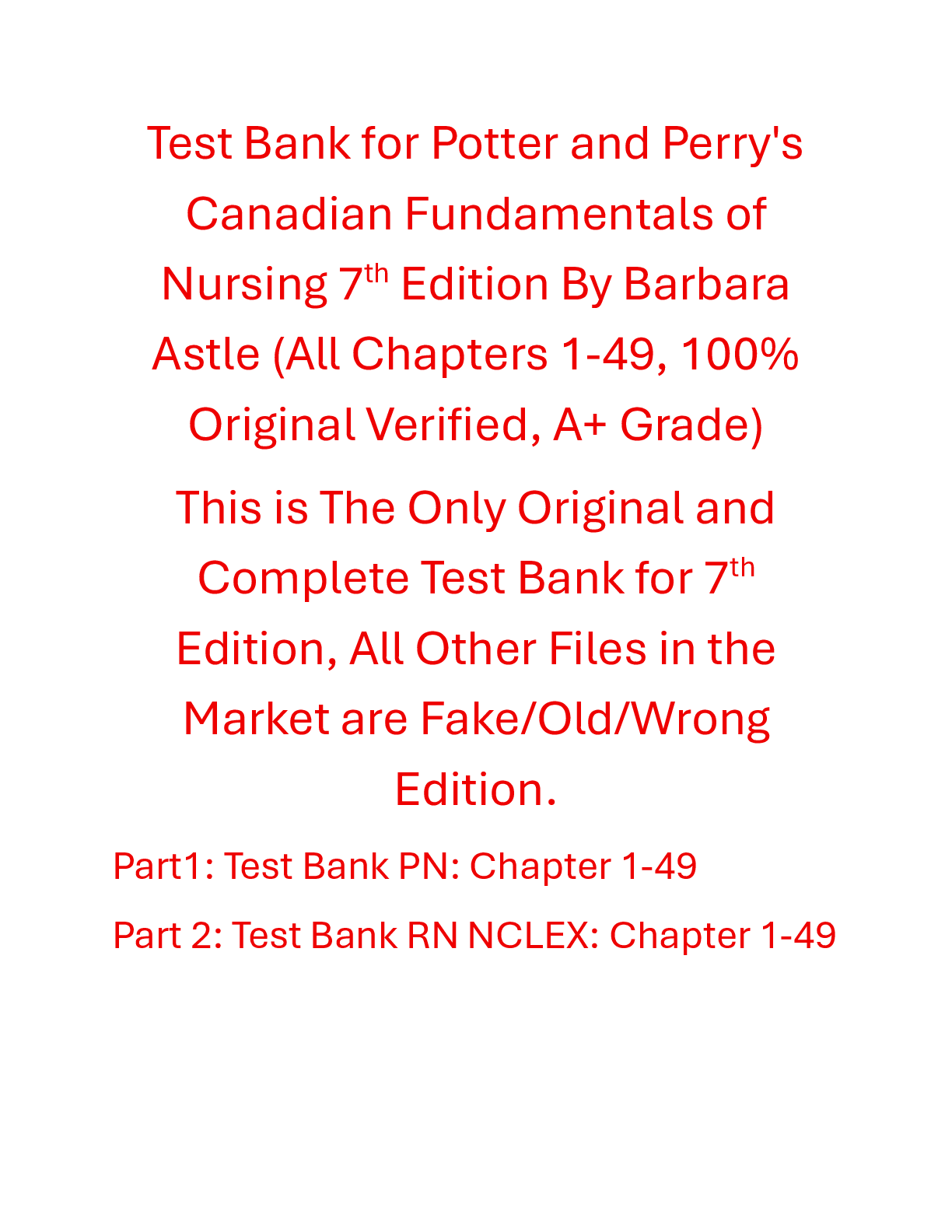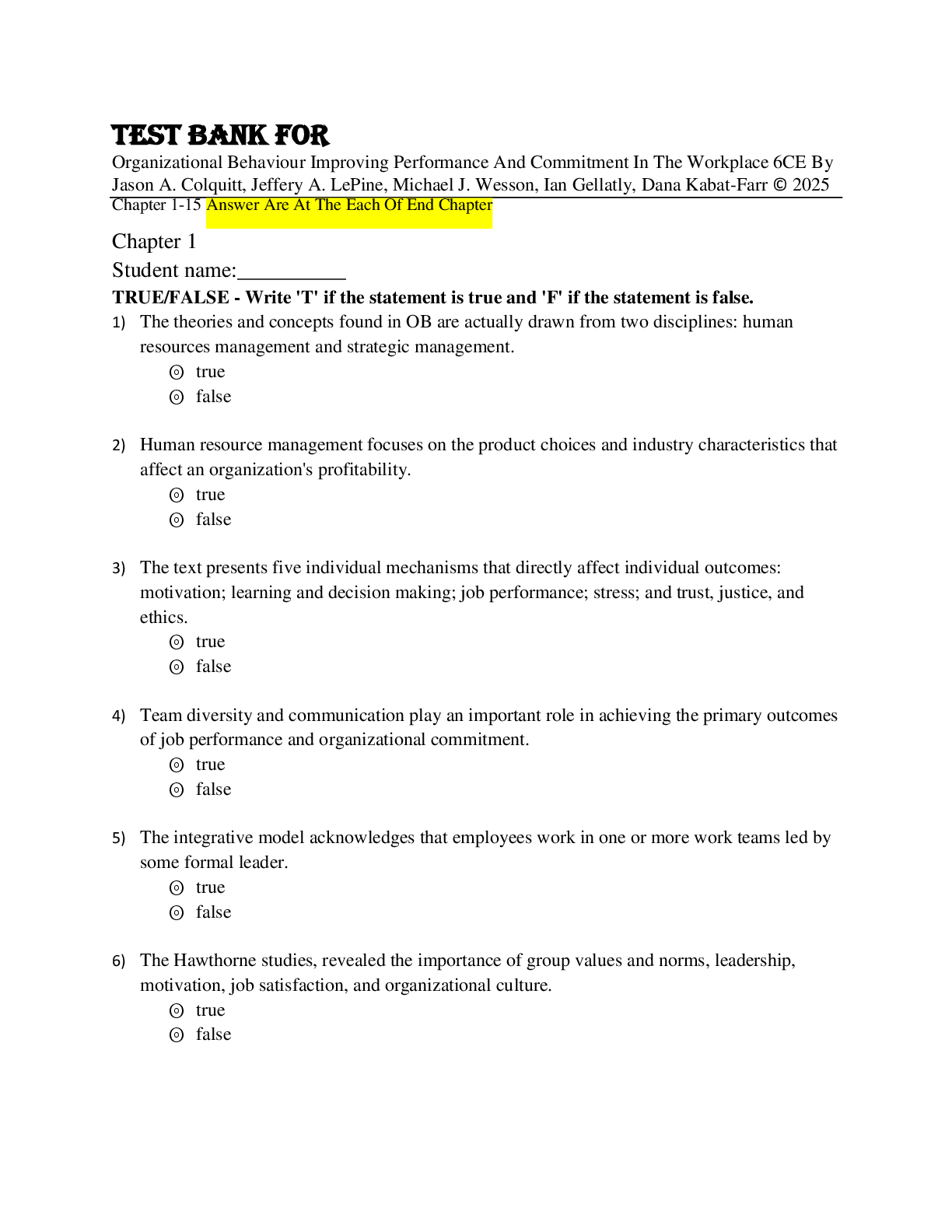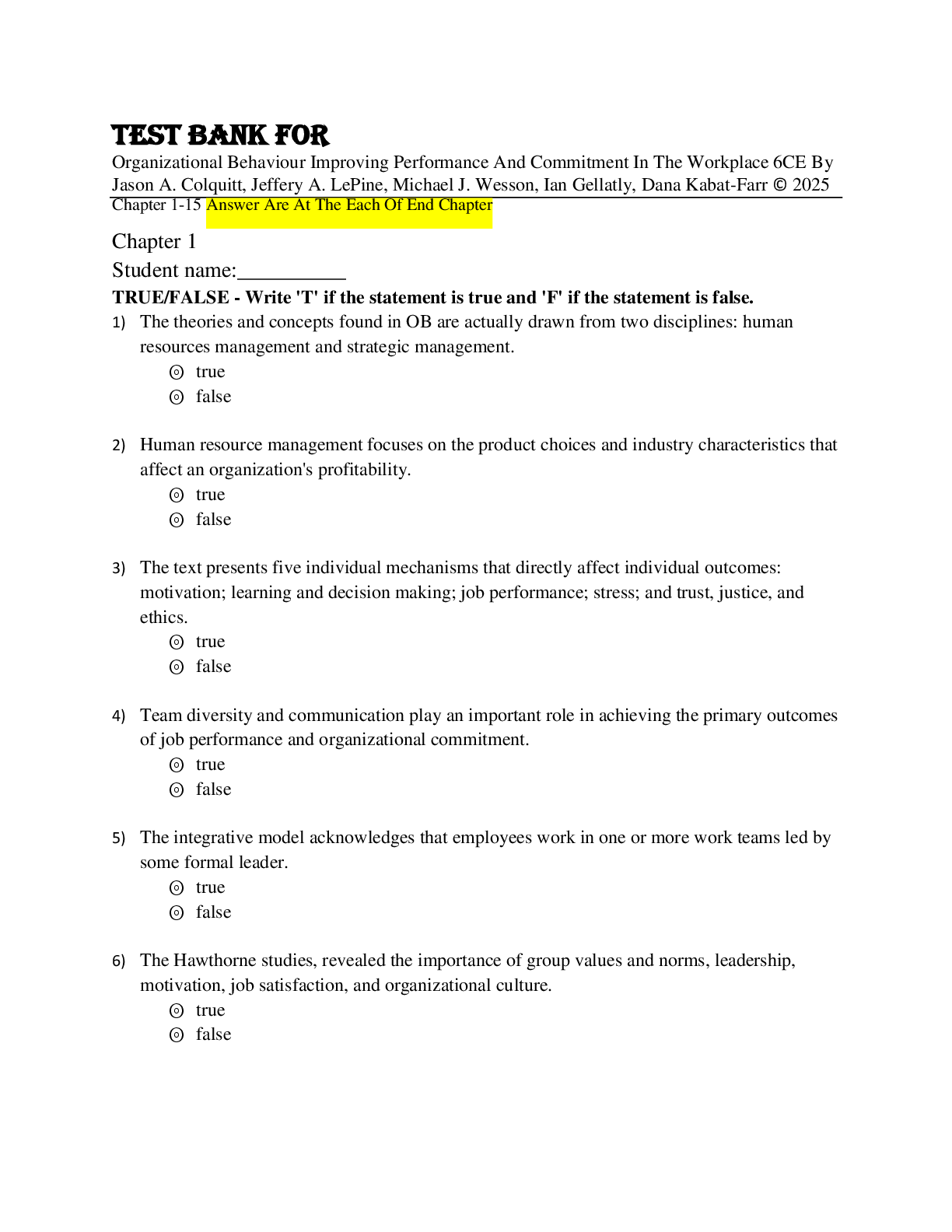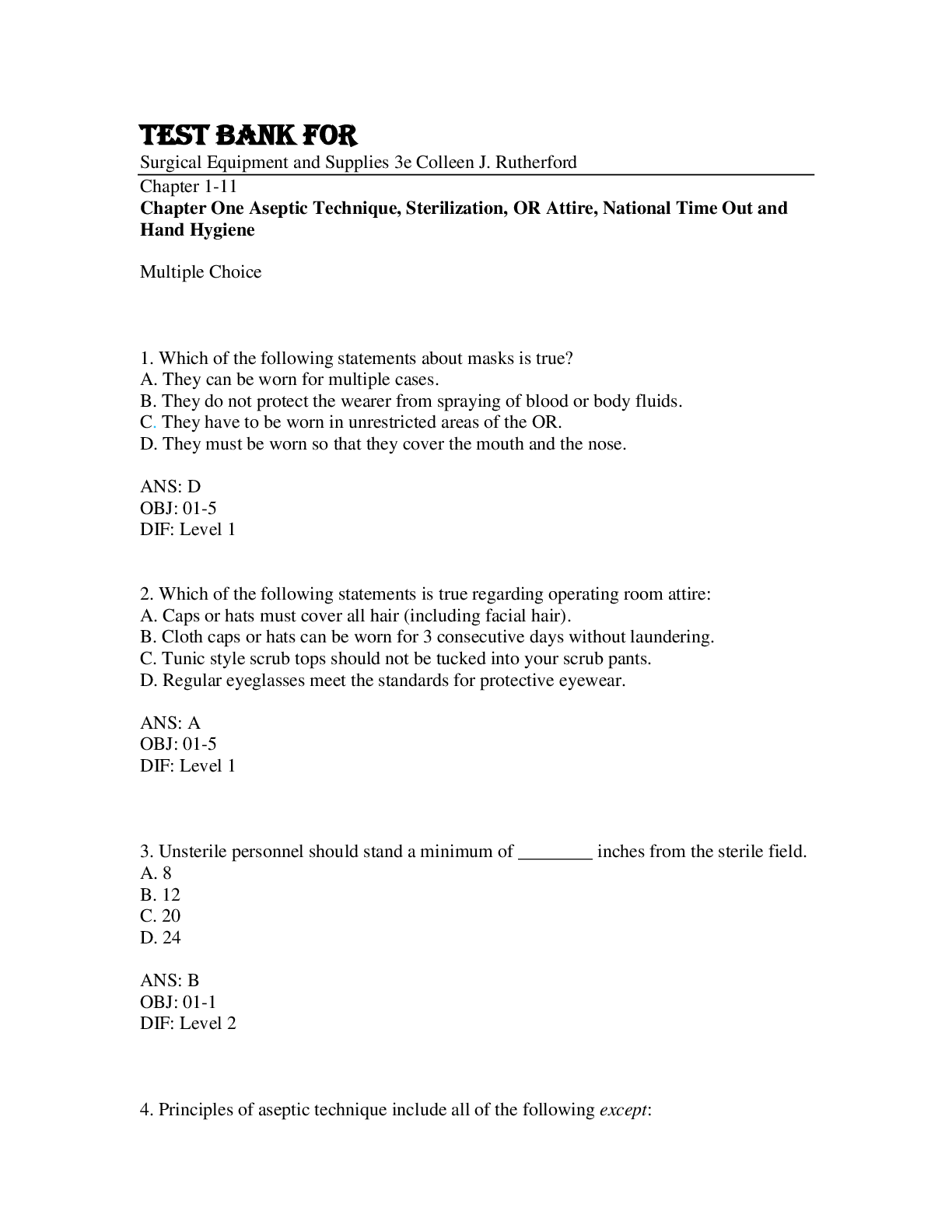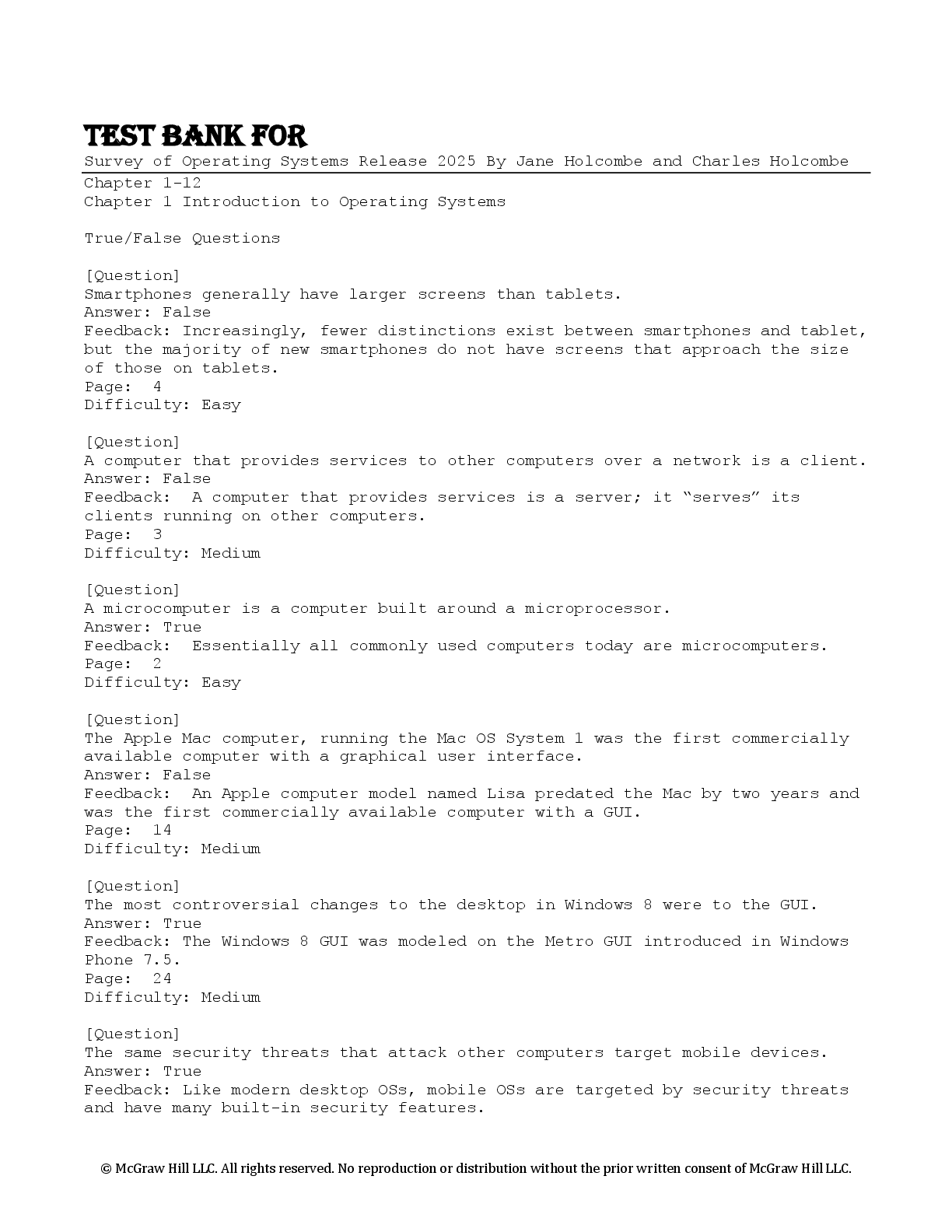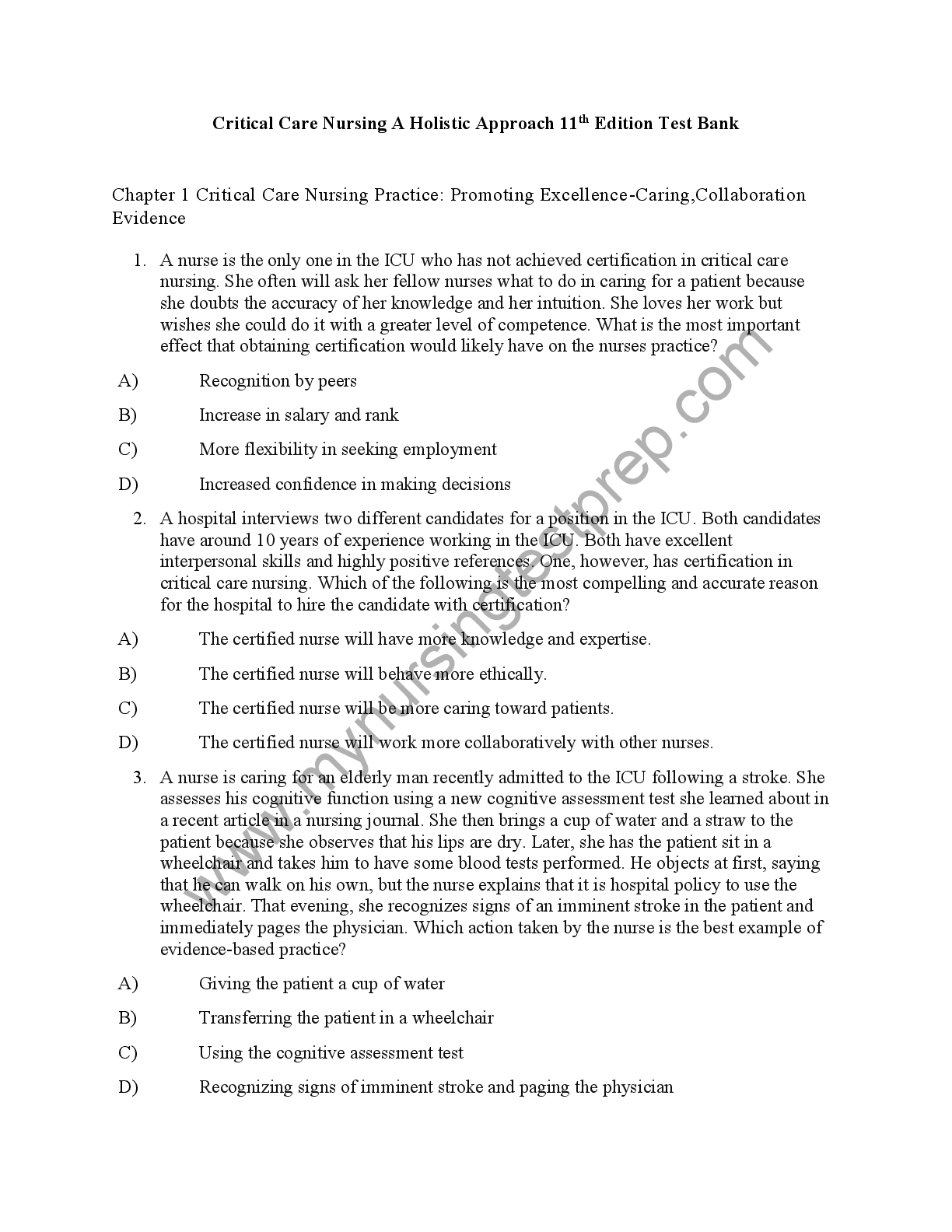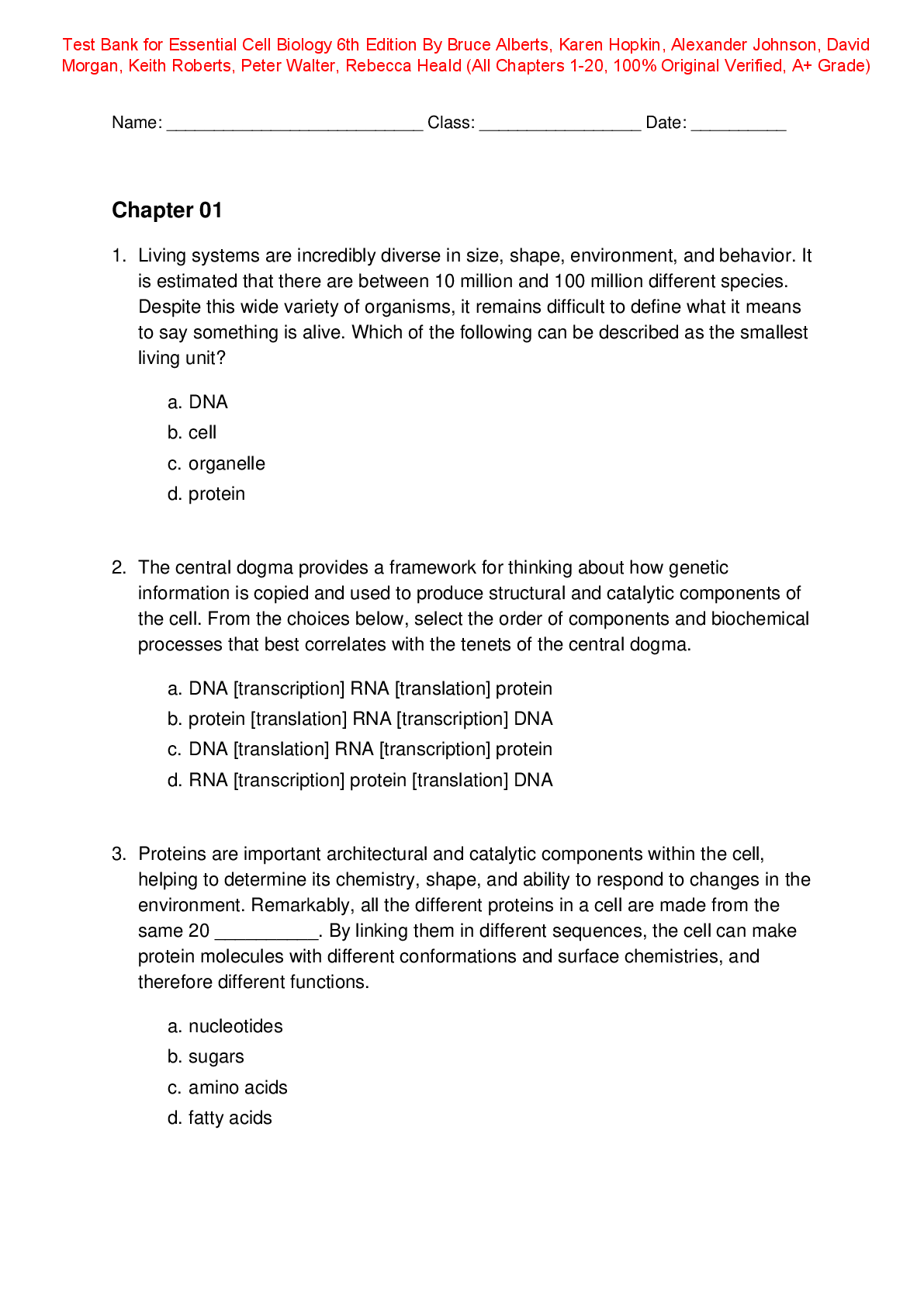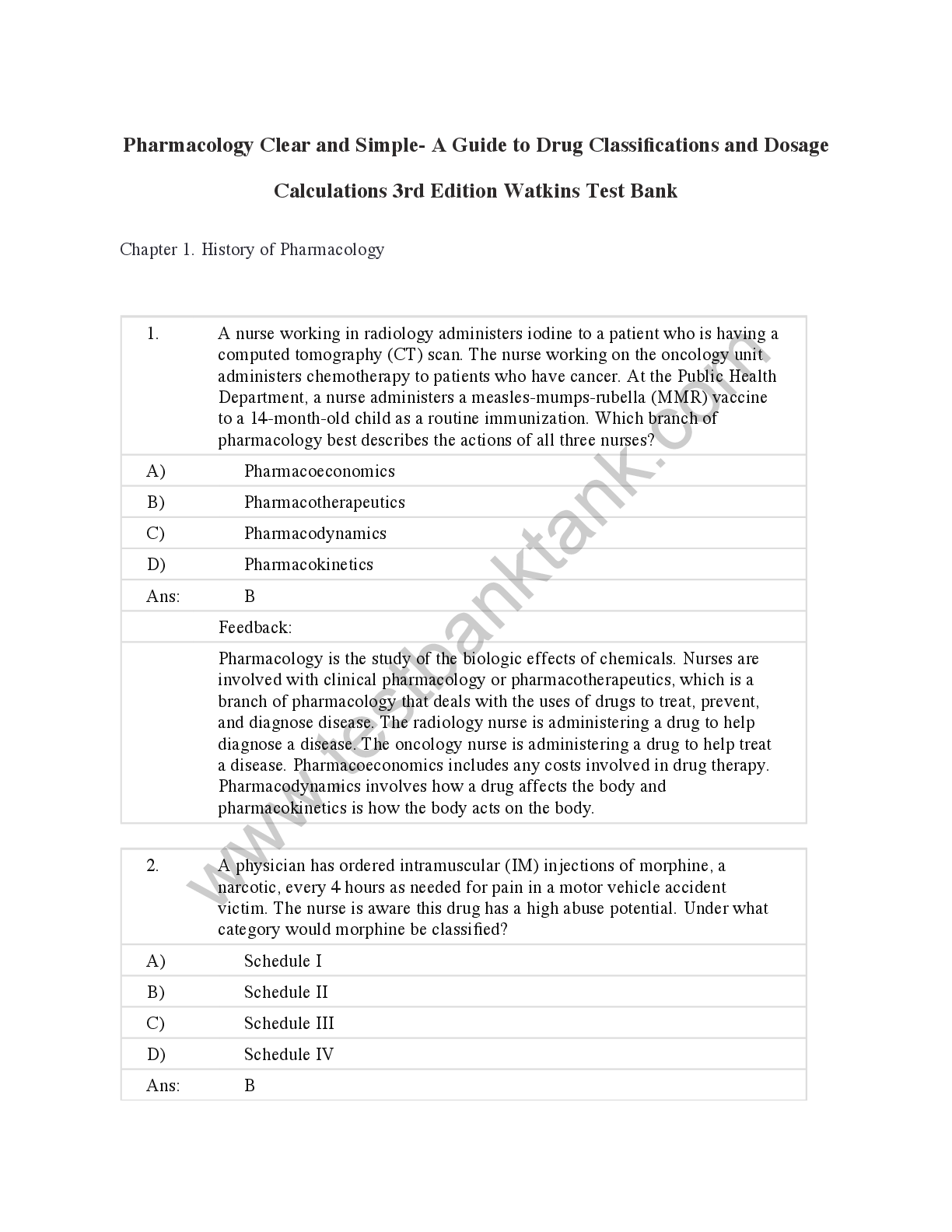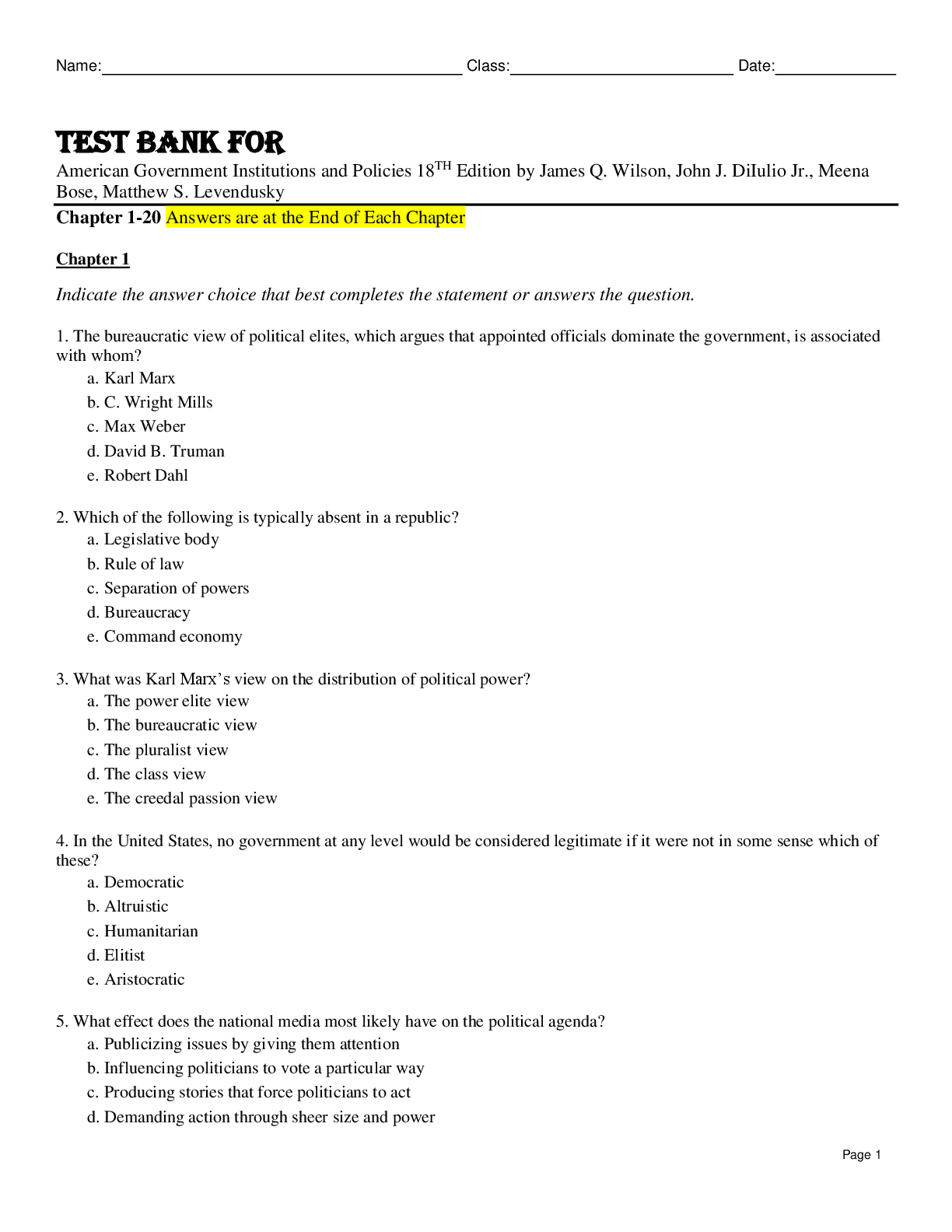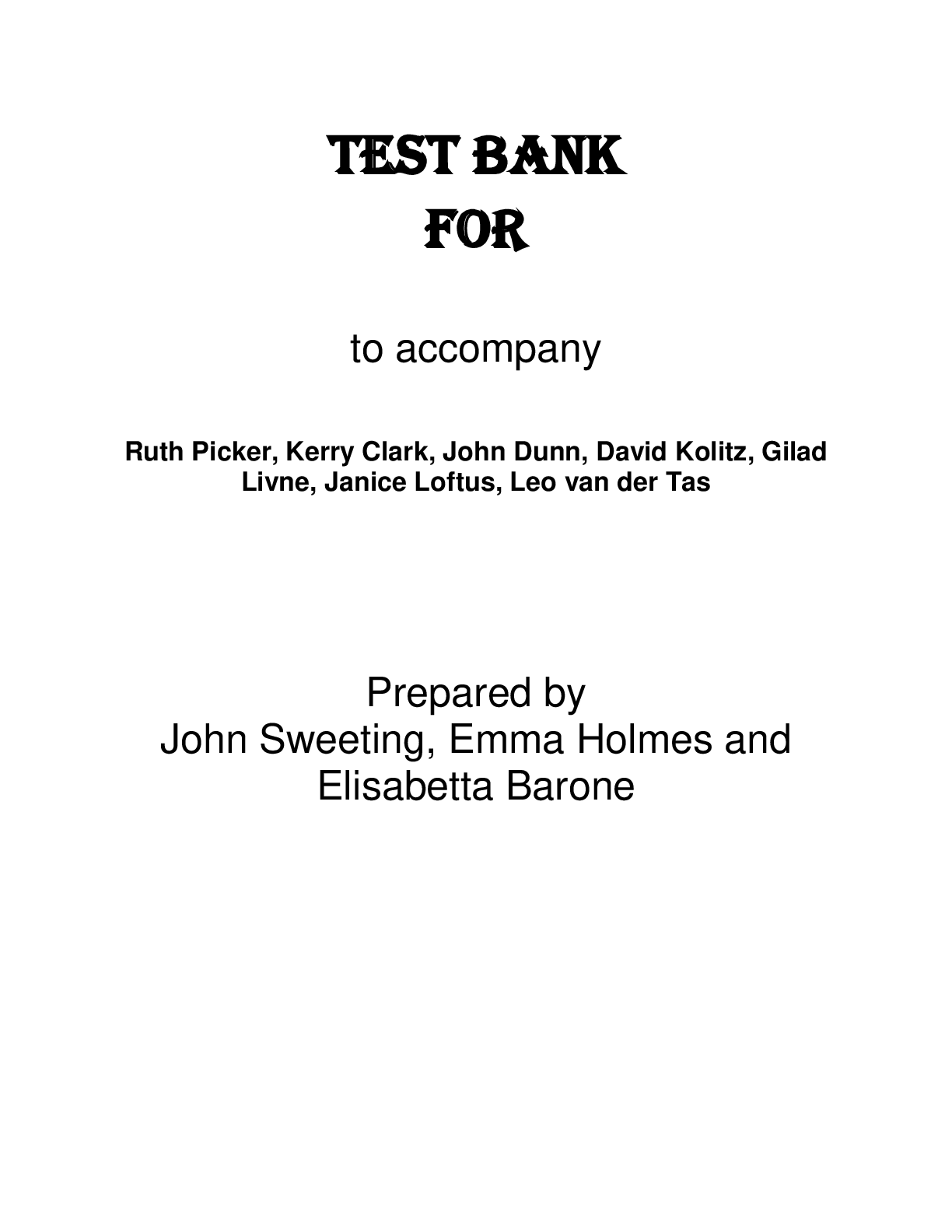Astronomy > TEST BANKS > TEST BANK 21st Century Astronomy FOURTH EDITION, Answered (All)
TEST BANK 21st Century Astronomy FOURTH EDITION, Answered
Document Content and Description Below
TEST BANK 21st Century Astronomy FOURTH EDITION, Answered-1. Astronomy I. Definition i. Astronomy loosely translated means “patterns among the stars” (MC: 1) II. Your Place in the Universe i. ... Your address: street, city, town, country, Earth, Sun, Milky Way, Local Group, Virgo Supercluster, universe (MC: 3, SA: 1) ii. Solar System: classical versus dwarf planets (TF: 1, 2, MC: 1–4, 7, SA: 2) iii. Milky Way: contains 200 to 400 billion stars (MC: 3, 5–7) iv. Local Group (MC: 3, 8) v. Virgo Supercluster (TF: 3, MC: 3) vi. Universe: contains hundreds of billions of galaxies, roughly as many stars as in the Milky Way (TF: 4) vii. Much of the universe is made of dark matter, and all of space is permeated by dark energy (TF: 5, MC: 9, 10) III. Scale of the Universe i. Speed of light, c 3 108 m/s (MC: 11) ii. d v t (TF: 2, MC: 12–17) iii. Light year is a measure of distance (TF: 6, MC: 12, SA: 3) iv. Distance versus time comparison: circumference of the Earth versus snapping your fingers (MC: 19, 20, SA: 4–6) IV. Origin and Evolution of Universe i. Age of universe: 13.7 billion years (MC: 21) ii. Big Bang created the initial chemical elements: H, He, Li, Be, B (TF: 7, MC: 22, 23) iii. Stars manufactured the other chemical elements from nuclear burning and explosions (TF: 7, 8, MC: 24, 25, SA: 7) iv. Solar System formed v. Life evolved on Earth Sec 1.2 2. Science Involves Exploration and Discovery I. Evolution of Astronomy from New Technology i. Satellites, e.g., Sputnik, lunar exploration, Solar System exploration (TF: 10, MC: 26, SA: 8, 9) ii. Space-based astronomy used for high spatial resolution and access to wavelengths blocked by the atmosphere (TF: 10, MC: 27, SA: 9, 10) iii. Cross disciplines: astronomy, physics, chemistry, geology, planetary science iv. Computers: a new important tool for astronomers (SA: 9) Sec 1.3 3. Science Is a Way of Viewing the World I. Scientific Method i. Scientific method (MC: 28, 29, SA: 11) ii. Rational inquiry iii. Facts iv. Hypothesis (MC: 28, 30, SA: 11) v. Theory (MC: 28, 30, SA: 12) vi. Testable predictions/falsifiable (TF: 10, 11, MC: 28, SA: 11) vii. Physical laws viii. Scientific principle ix. Occam’s razor (MC: 31, 32) x. Cosmological principle (TF: 12, MC: 33, 34, SA: 13, 14) II. Scientific Knowledge Changes and Evolves i. Scientific knowledge continually evolves, usually slowly and gradually, because of new information (MC: 28) ii. Even when a theory is accepted as true, it may need revision later when new data comes along (TF [Show More]
Last updated: 1 year ago
Preview 5 out of 663 pages

Loading document previews ...
Buy this document to get the full access instantly
Instant Download Access after purchase
Buy NowInstant download
We Accept:

Reviews( 0 )
$17.50
Can't find what you want? Try our AI powered Search
Document information
Connected school, study & course
About the document
Uploaded On
Oct 17, 2024
Number of pages
663
Written in
All
Additional information
This document has been written for:
Uploaded
Oct 17, 2024
Downloads
0
Views
176

